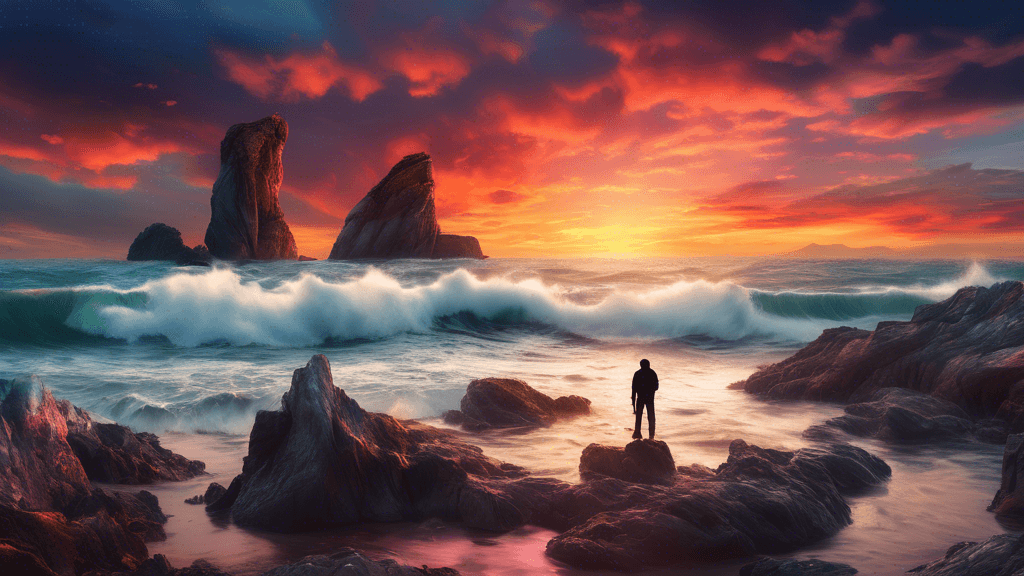
Capturing the Vast: Tips for Mastering Seascape Photography
Share
Mastering the Art of Seascape Photography
Seascape photography is a powerful genre within the field of photography, offering limitless opportunities to capture the raw and mesmerizing interactions between the sea and land. Whether you're an aspiring photographer or a seasoned professional looking to expand your portfolio, understanding how to effectively capture seascapes can transform your photographic approach and outcomes.
What is Seasauce Photography?
Seascape photography involves capturing images of the sea and its surroundings - a genre that not only encompasses the direct capture of oceans, but also includes beaches, coastlines, and large lakes. It is a practice deeply rooted in the landscape photography tradition, requiring an understanding of both terrestrial and aquatic elements to effectively compose and capture its vastness and beauty.
Why Focus on Seascape Photography?
Engaging with seascape photography allows photographers to explore a canvas that is constantly changing. Ocean scenes are dynamic, influenced by varying weather conditions, lighting, and tides, offering a fresh perspective almost every time you view it. Moreover, seascapes can convey deep emotions—from the tranquility of a calm beach at dawn to the turmoil of an angry sea during a storm—making it a profoundly expressive area for artistic endeavors.
Essential Techniques for Capturing Stunning Seascapes
Mastering seascape photography requires patience, persistence, and a keen eye for detail. Here are some essential techniques that can help elevate your seascape images:
Understand the Best Lighting
Lighting is crucial in all types of photography but becomes even more significant when dealing with seascapes. The golden hours—shortly after sunrise and before sunset—offer the best lighting conditions because the softer light enhances textures and tones. Additionally, the angle of the sun during these times can create dramatic effects with shadows and highlights that accentuate the water's movement and the landscape’s features.
Use the Right Equipment
Choosing the right gear is vital for capturing compelling seascape photographs:
- Camera: A DSLR or mirrorless camera with manual settings is preferable, allowing more control over the exposure.
- Lenses: A wide-angle lens is typically recommended for seascapes to capture as vast a scene as possible. A telephoto lens can also be useful to focus on distant details, like waves or a horizon.
- Tripod: Sea conditions can be unpredictable and often require long exposure times, making a sturdy tripod essential.
- Filters: Neutral density filters can help manage light exposure and balance the scene, while polarizing filters can reduce glare and enhance colors.
Composition and Perspective
How you compose your seascape can dramatically affect its impact. Here are a few pointers:
- Rule of Thirds: This classic composition technique involves dividing the image using two horizontal and two vertical lines. Place points of interest along these lines or their intersections to create balance in your photos.
- Leading Lines: Use natural lines, like the shore, a jetty, or waves, to lead the eye into the picture.
- Foreground Interest: Including elements like rocks, shells, or even human figures in the foreground can add depth and interest to your seascape images.
Noted photographer Ansel Adams once said, A good photograph is knowing where to stand. This is particularly true for seascape photography, where shifting your position can reveal completely different aspects of the scene.
The Environmental Aspect
While engaging with the natural beauty of seascapes, it's crucial to practice ethical photography. This involves respecting wildlife and the environment, understanding and complying with local regulations, and ensuring that nothing is disturbed or taken from the scene.
Seascape photography not only showcases the beauty of the ocean but it also has the power to raise awareness about the fragility of our marine environments. Capturing images that highlight the impact of human activity on oceans can be a form of environmental advocacy, encouraging more people to participate in ocean conservation efforts.
Conclusion
Becoming proficient in seascape photography opens up a world of creative possibilities and can deepen your connection with nature. Whether you're capturing the serene blue of a calm sea or the stormy clash of waves against rocks, each image you take is an ode to the ocean's everlasting allure and power.
To truly master seascape photography, continue learning, experimenting with new techniques, and most importantly, spend as much time as possible at the edge of the water. So, are you ready to capture the vast? The ocean awaits.





